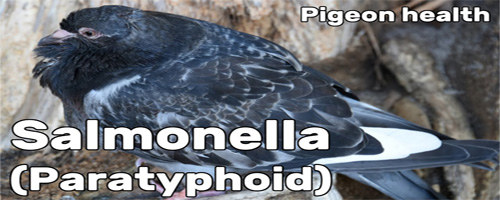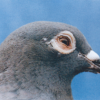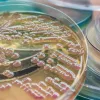
Salmonella Paratyphoid in Pigeons: Prevention & Care
Salmonella, also known as Paratyphoid, is one of the most widespread and challenging bacterial infections affecting pigeons. Given the nature of pigeon racing and exhibitions, where birds from various lofts come into contact, the disease spreads easily and can be difficult to control. Paratyphoid infections can lead to severe health complications, affecting a pigeon’s joints, digestive system, and even the central nervous system.
To protect pigeons from this serious bacterial infection, proper prevention, early diagnosis, and vaccination with the Salgen Vaccine are crucial. This article will provide an in-depth look at the causes, symptoms, prevention, and control strategies for Paratyphoid in pigeons.
Understanding Salmonella Paratyphoid
Paratyphoid is caused by the Salmonella bacterium, which can survive in the environment for long periods, particularly in unsanitary conditions. The infection is commonly introduced into a loft through contaminated feed, exposure to infected birds, or contact with rodents. Pigeons of all ages can contract the disease, but younger birds under six weeks are especially vulnerable.
One of the most noticeable signs of Salmonella infection in pigeons occurs during the moulting season, where dropped feathers may have blood on the root side. This can indicate underlying bacterial infection.
How is Salmonella Spread?
- Contaminated food and water – Rodents, wild birds, and unclean lofts contribute to the spread.
- Carrier pigeons – Some pigeons may carry and spread the disease without showing symptoms.
- Contact at races and shows – Birds from different lofts interact, increasing the risk of infection.
- Egg transmission – Infected breeding pigeons can pass the bacteria to their offspring through the egg.
Symptoms of Paratyphoid in Pigeons
The symptoms of Paratyphoid vary depending on the age of the pigeon and the organs affected. Young pigeons may develop ‘going light’ syndrome, characterized by loss of appetite, diarrhea, and severe weight loss. This can result in high mortality rates in birds under six weeks of age.
In older pigeons, the infection can take different forms, affecting various parts of the body:
1. Joint and Limb Infections
- Swelling in the wing or leg joints, causing lameness or limping.
- Stiffness and reluctance to fly.
- One-wing droop due to infection in the shoulder joint.
2. Neurological Symptoms
- Inflammation of the membranes around the brain (meningitis) leading to:
- Loss of balance
- Head tilt (wry neck)
- Twisting of the neck (rare cases)
3. Reproductive Issues
- Infertility in both males and females.
- Contamination of eggs before laying, leading to:
- Dead-in-shell embryos.
- High nestling mortality rates.
4. Gastrointestinal Symptoms
- Weight loss and poor condition.
- Green, slimy droppings (a common indicator of Salmonella).
5. Eye Infections (Rare Cases)
- One-eye blindness, though uncommon, has been observed in some infected birds.
Preventing Salmonella in Pigeons
Prevention is the best defense against Paratyphoid. Proper loft management, hygiene, and vaccination can significantly reduce the risk of infection.
1. Loft Hygiene
- Clean lofts regularly to remove droppings, as Salmonella bacteria can survive in them for extended periods.
- Disinfect feeders, drinkers, and perches frequently.
- Minimize contact with rodents, roaches, and wild birds—common carriers of the bacteria.
- Maintain a low pH (below 4.0) in the drinking water to create an environment that discourages bacterial growth. Nolvasan disinfectant (1 teaspoon per gallon of water) can help maintain this acidic environment.
2. Quarantine and Health Monitoring
- Quarantine new pigeons for at least 5 days before introducing them to the loft.
- Observe new birds for any signs of illness and put them on preventive medication if necessary.
- Regular laboratory testing for Salmonella is recommended to detect infections early.
3. Vaccination with Salgen Vaccine
One of the most effective ways to protect pigeons from Salmonella Paratyphoid is through vaccination. The Salgen Vaccine provides immunity against Salmonella bacteria, reducing the likelihood of infection and severe complications.
Benefits of Salgen Vaccine:
✅ Provides strong immunity against Salmonella.
✅ Helps prevent infections in racing and breeding pigeons.
✅ Reduces the risk of disease transmission among pigeons in shared environments.
✅ Easy to administer and safe for healthy pigeons.
Managing a Salmonella Outbreak in the Loft
If an outbreak occurs, immediate action is necessary to control the spread and protect the flock. A three-step treatment plan is recommended:
1. Remove Infected Birds
- Cull severely affected pigeons to prevent suffering and further spread.
- Isolate mildly affected birds for treatment.
2. Administer Antibiotics
- Treat the entire loft with an appropriate antibiotic for at least 10 days.
- Common medications used to treat Salmonella include:
- Enrofloxacin (Baytril)
- Trimethoprim-Sulfa combinations
- Amoxicillin
3. Deep Clean the Loft
- Disinfect the entire loft, including perches, nesting areas, and feeding stations.
- Remove and replace contaminated bedding materials.
- Ensure proper ventilation to keep moisture levels low.
Conclusion
Salmonella Paratyphoid is a serious bacterial disease that can significantly impact pigeon health, breeding success, and racing performance. Given the challenges of preventing disease transmission in racing and show pigeons, fanciers must take a proactive approach by maintaining strict loft hygiene, monitoring bird health, and using vaccinations like the Salgen Vaccine.
Regular health checks, laboratory testing, and preventive strategies are key to keeping pigeons strong, healthy, and competitive. By following these best practices, pigeon keepers can effectively reduce the risk of Salmonella outbreaks and ensure their birds perform at their best year-round.
“Until Next tine Keep Them Healthy And Flying”


